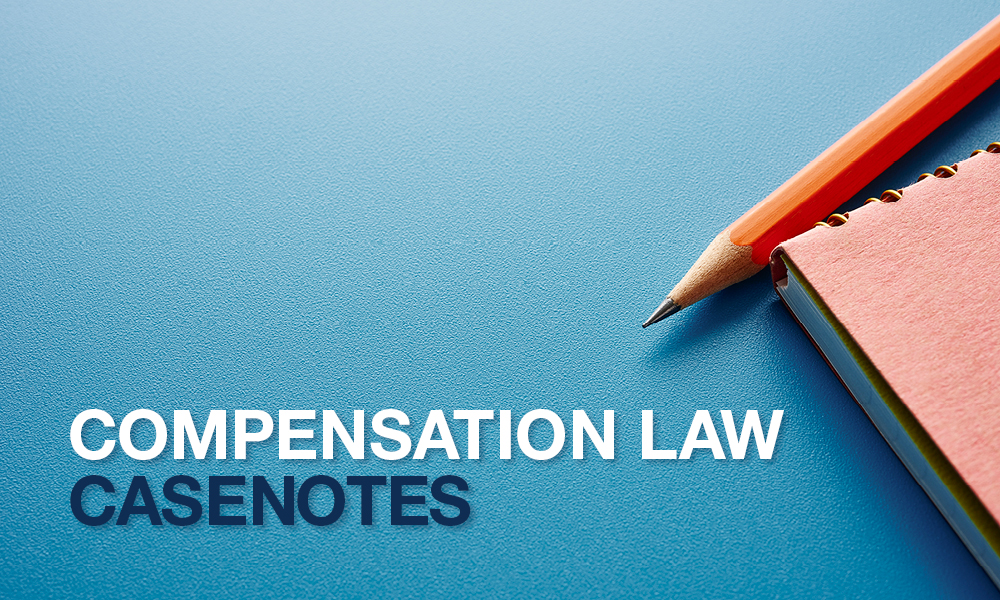The appellant brought a claim for personal injuries sustained in January 2012 whilst working on an offshore drilling rig.
He alleged he slipped on a mud mixture which caused him to fall. The appellant claimed he suffered a fracture at T8, disc protrusion at T7/T8 and damage to sensorial nerves resulting in nociplastic pain, and as a result, developed a psychiatric condition.
The appellant brought a claim against the first respondent, as operator of the drilling rig, and the second respondent as the labour hire company which employed him. Both respondents denied the fall occurred and asserted that the appellant was an unreliable historian.
At the conclusion of the trial, the appellant conceded the claim against the second respondent could not be made out, because the appellant did not meet the statutory impairment threshold to bring a common law claim under the workers’ compensation legislation.
The court found that the first respondent breached its duty of care, but that the plaintiff was not a credible witness and had not established the fall occurred in the matter alleged, or proven that personal injuries were sustained.
The appellant appealed the decision on the grounds the trial judge erred in law:
- By finding he did not fall with sufficient force to cause injury to his nerves when his evidence was not challenged at trial, and there was no evidence of the degree of force necessary to cause nociplastic pain.
- By denying the appellant procedural fairness by making findings on medical causation contrary to the appellant’s evidence, when he had not been cross examined on those aspects of his evidence in chief.
The appellant sought orders that the decision be set aside, and judgment entered against the defendant for damages to be assessed.
Decision
The appeal was dismissed.
Ratio
Ground 1(a)
The court found the appellant did not establish there was any error of law, and the trial judge did not misunderstand the evidence for two reasons:
- The appellant raised a Browne v Dunn point contending that the trial judge was bound to accept the appellant’s evidence regarding the degree of force with which he fell, because it was not challenged in cross-examination.
It was observed the appellant’s evidence was challenged regarding the existence and extent of his alleged pain and disability, and there was no challenge to the trial judges’ findings that the appellant was given the opportunity to answer the challenges regarding him not accurately, or truthfully, reporting to his doctors to make out his claim. - There was no requirement that the trial judge must accept evidence that was not the subject of cross‑examination, as cross‑examining a witness on a point is merely a relevant factor to be evaluated and weighed in deciding to accept/reject that evidence. Further, the appellant failed to establish that the trial judge misunderstood the evidence that the appellant fell forcefully on his back as alleged.
Ground 1(b)
The issue was whether the applicant established that the fall caused injury to the sensorial nerves and associated hypersensitivity of the nervous system, resulting in nociplastic pain. The trial judge concluded that whilst it was open to find that soft tissue injuries can take time to appear, the development of pain one month later was considered outside of the ordinary timeline associated with the existence of nociplastic pain.
The court observed that medical causation was a question of fact on which appellant bore the onus of proof, and whether the onus was discharged is not a question of law. The court found the appellant cannot assume the evidence ought to be accepted, and a finding which is averse to the weight of the evidence does not establish a basis for judicial review.
Ground 2
The court noted the principles in Browne were not infringed, and observed that the matters complained about by the appellant were sufficiently put to him in cross-examination. In addition, the court commented that the rule in Browne could not be applied without qualification to challenge the credit of a plaintiff, in an action for damages for personal injuries regarding his evidence. It was held that the medical evidence did not demonstrate there was a sensorial disturbance giving rise to nociplastic pain.
This compensation law casenote appears courtesy of Travis Schultz & Partners (TSP), where the author, Starsha Bohane, is a lawyer. As part of the firm’s commitment to providing ongoing legal education, TSP practitioners review relevant judgments and prepare case summaries for the legal profession. A free searchable catalogue of compensation law casenotes is available at schultzlaw.com.au/case-summaries (registration required). The full version of the judgments can be found at austlii.edu.au.













Share this article